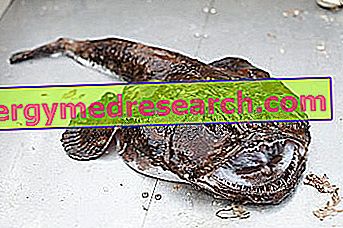By Dr. Marco Sist
Periodization is a phase of a process through which workloads are distributed over time in order to improve and then maintain the athlete's performance level.
This process develops in three phases:
Planning
periodization
Programming
In the planning phase, a wide-ranging analysis of the competitive season is carried out, taking into account all the elements related to it (calendar, transfers, mid-week shifts, recovery phases, special situations).
In the periodization phase, the development of workloads at different times of the season and the organization of the various training elements are studied in detail (technical, tactical, physical and mental preparation).

After then a wide-ranging analysis of the competitive season carried out by the staff, we move on to the development of workloads and the logical organization of the same over time. This occurs through the division of the loads into work cycles (macrocycles) with different duration, characteristics and objectives.
A first division in cycles requires the consideration of 4 periods:
- Preseason (6 weeks and 12)
- In-season (33 weeks)
- Postseason (2 weeks)
- Off-season (10 weeks and 12)
Afterwards each working period is analyzed, further divided into cycles (meso and microcili), the objectives are fixed and consequently training methods and means are chosen.
Preseason
After one, two weeks of recovery following the off-season (generally coinciding with summer holidays) the athlete is about to face the preseason.
In this phase the main objective is the development of the maximum dynamic force (FMD) and of the power through the inclusion of specific sports training means and methods. These expressions of strength are in fact those that most characterize the game of basketball.
The preseason is generally divided into seven microcycles.
The first, of three days, is dedicated to the evaluation of the athlete's level of strength. Four of them follow, each of seven days, in which the work develops increasingly, through four sessions in a cycle. The last two cycles, on the other hand, envisage three strength sessions each. The organization of the same is such that two of them are dedicated to the upper limbs and two to the lower limbs for the first four microcycles (excluding the initial evaluation), while in the last two there is a shift to three lower limbs and above.
Within the training sessions the exercises vary starting from a prevalence of those dedicated to FMD in the initial cycles, leaving more space to those dedicated to power.
The methods used are mainly three: series and repetitions, various pyramids, super series (only between strength exercises and explosives; eg: front squat + box jump)
The choice of exercises responds to the principle of specificity. Movements that have the greatest possible connection with the gesture of competition and multi-joint movements are preferred. However, part of the work remains dedicated to compensating exercises to keep the various muscle sectors in balance.
Part of the work is carried out trying to develop strength and power in conditions of instability using proprioceptive tablets, fit balls and anything else that can disturb the balance of the athlete during the execution of the gesture.
The use of the machines is very limited. Except for the lat machine, the leg press (used only in special cases), and the leg curl (used for compensation exercises) the training means are: barbell, dumbbells, benches, medicine ball, elastic bands and tools for unstable work.
The chosen exercises are divided into multi-joint and mono-articular exercises.
The former include the squat, the lunges, the step up, the split squat, the flat bench, the lat machine, for the development of the FMD. The turns, the box jump, squat jump, various leaps and launches of the medicine ball for the development of power .. The momentum, the push jerk and the tear are used only if those who have a very good technique. Mono-articular exercises are those that concern the arms (biceps triceps) or areas of the legs (leg flexors, calves).
First working microcycle: evaluation of the athletes
In this microcycle the evaluation of the athletes' strength level is carried out.
For the large muscle chains (pectoral-triceps, dorsal-biceps, calves-quadriceps) an estimate is made of the indirect ceiling on three exercises, respectively extensions on flat bench, traction on the lat machine, extensions to the squat. This estimate occurs by trial and error until the athlete is able to perform a number of repetitions for a given load, between 2 and 5. The values obtained are then inserted into tables or equations and the maximum is estimated. This value remains an estimate with all the limits connected to it. The workload is in fact adequate to the conditions of form that the athlete lives on a daily basis, thus also making changes with respect to the values suggested by the tests.
For the smaller muscle sectors (biceps, triceps, etc.) a load is estimated for a given exercise for which the athlete is able to perform 10 repetitions.
Once the starting level has been established, the subsequent work cycles are organized.
Microcycles two, three, four and five
The starting organization of these cycles involves two sessions of strength dedicated to the upper limbs and two to the lower ones alternating between them.
Monday | Tuesday | Wednesday | Thursday | Friday | Saturday | Sunday |
| AS | AI | AS | AI |
Example of subdivision by body zones
The objective of these cycles is, as already mentioned, the development of FMD and power. This happens starting from the first cycle in which the sessions are exclusively FMD address and as you proceed, power elements are inserted.
Monday | Tuesday | Wednesday | Thursday | Friday | Saturday | Sunday |
FMD as | FMD ai | FMD as | FMD ai |
Two and three work micro-cycles
Monday | Tuesday | Wednesday | Thursday | Friday | Saturday | Sunday |
FMD as | FMD ai | POT as | POT ai |
Four and five work micro-cycles
Microcycles five and six
In the last two microcycles the sessions go from four to three, taking on an organization similar to those of the in-season.
The first of these, generally on Tuesdays, involves work on power through plyometric exercises for both the upper and lower limbs.
The second contains, for the lower limbs, elements of both FMD and power, while for the upper limbs only FMD. For the lower limbs, the third one only has a power work and for the upper limbs is FMD.
Monday | Tuesday | Wednesday | Thursday | Friday | Saturday | Sunday |
POT as-ai | FMD asai-POT ai | POT to the FMD as |
Microcycles six and seven
The subdivision of the exercises follows the principle of the split routine for the upper limbs, whose muscular districts are divided between Wednesday and Thursday as regards the FMD. (ex: Wednesday: pectoral and biceps, Thursday: triceps and shoulders back) while on Tuesday they are engaged in plyometrics (mainly medicine balls). The lower limbs are subjected to plyometric work on Tuesday, while on Wednesday they are trained in a mixed direction (FMD and power). On Thursday, space is given to the explosive force.
The load distribution (volume intensity and density) is decreasing starting from Tuesday.



